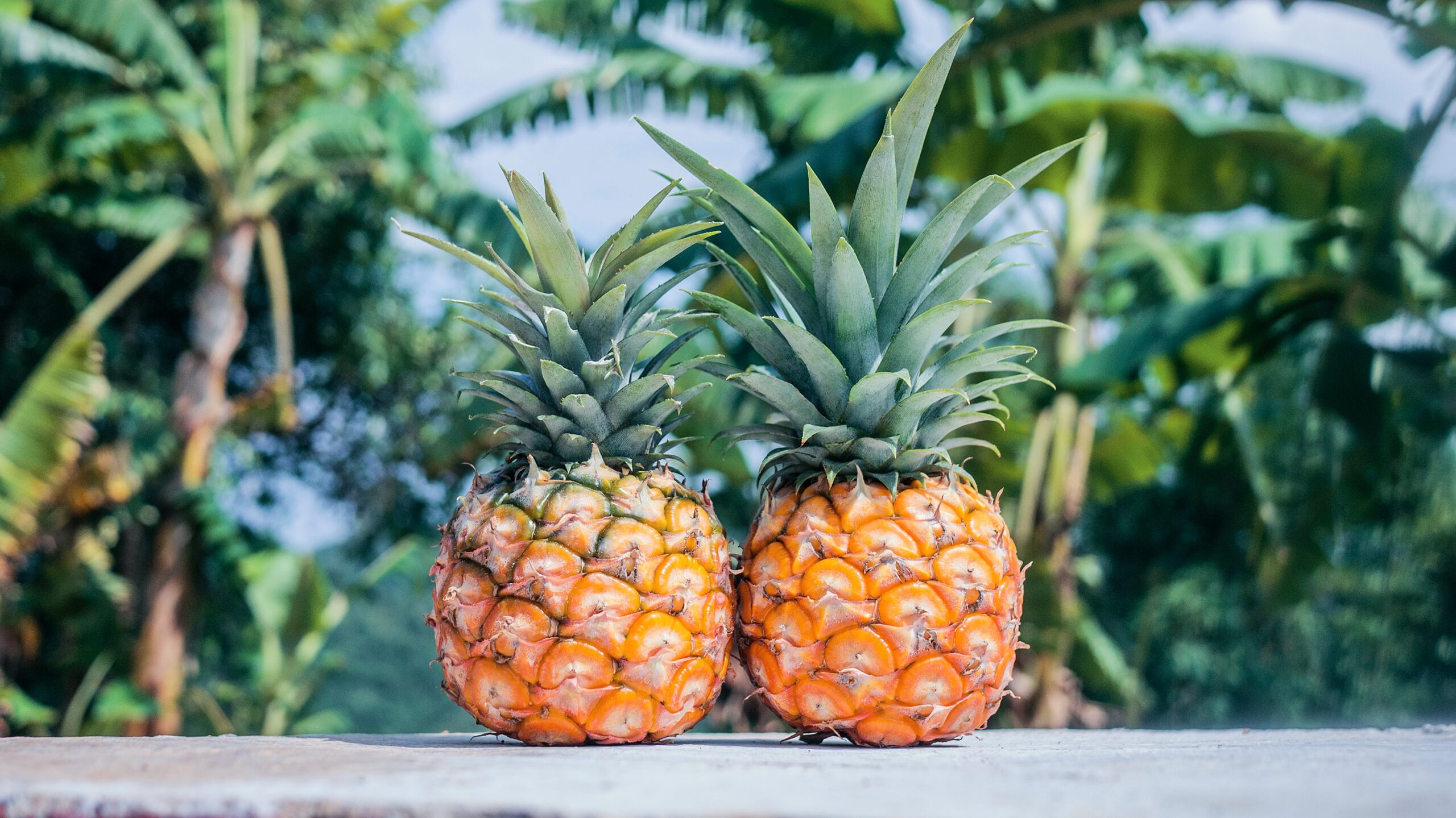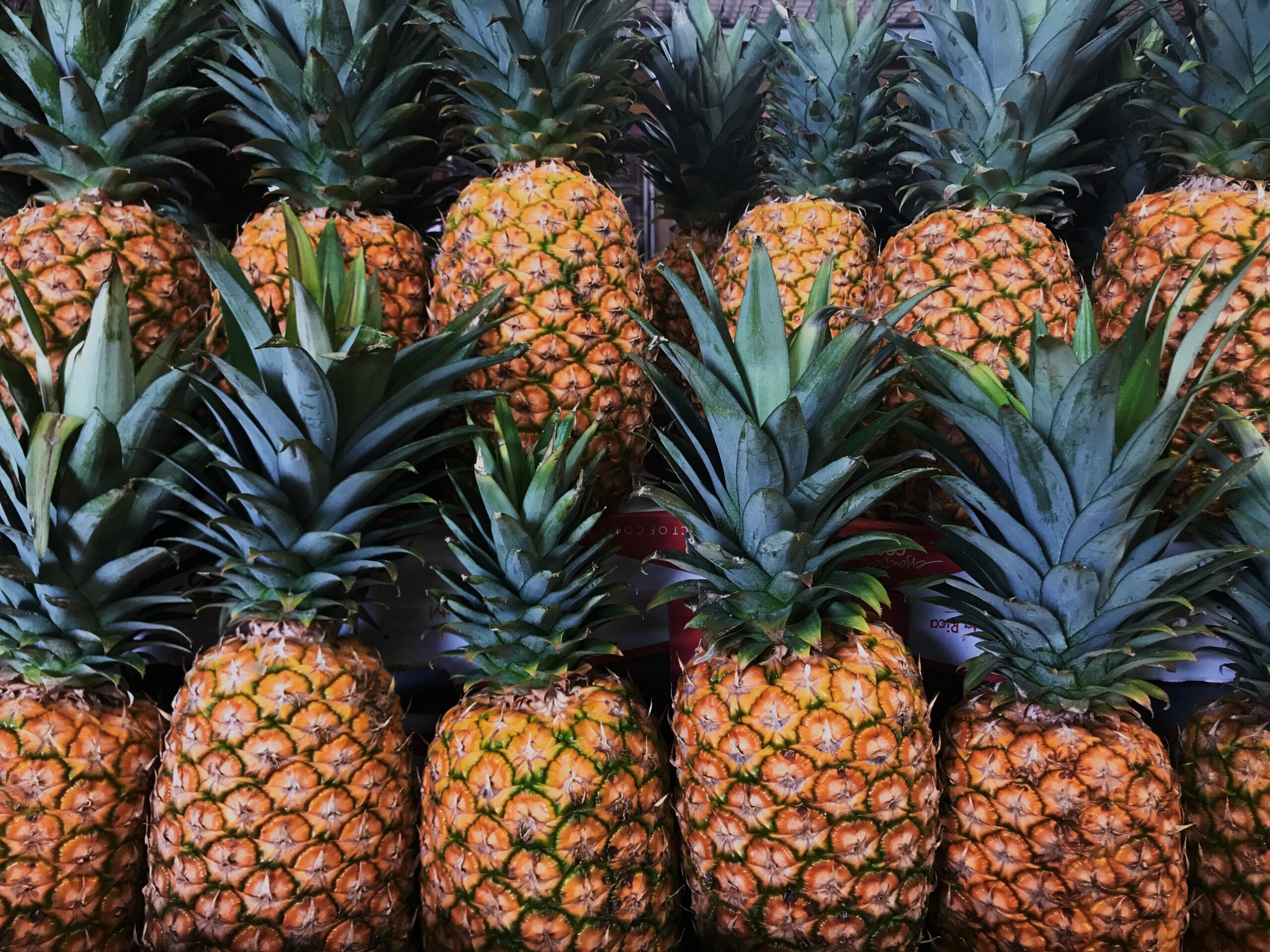
Indigenous to South America the pineapple (Ananas comosus) is a tropical plant that belongs to the Bromeliaceae family; it can be grown in a small garden from the crown (top of the fruit) or from the offshoots from an established plant. Its fruit has a rough, prickly skin with delicious, juicy flesh that is at the same time sweet and slightly sour; it was called pineapple by European explorers because they thought it looked like a pinecone.
We are so used to see it on our tables, that is hard to imagine that in the 17th century, when it was introduced to Europe, it was considered a luxury item. It is said that people rented pineapples to display at their celebrations.
When buying a pineapple, look for one that is heavy and offers up a sweet smell on its end. Cut both ends and then proceed to separate the flesh from the skin, making sure that you eliminate the “eyes”. You may serve in slices or chunks. Better if eaten within two days.
The wonder of this fruit is that the skin is as useful as the flesh, You don’t have to throw it away! Boil it with a cinnamon stick, a clove and brown sugar or better yet, unrefined brown sugar to make a comforting, delicious drink that can be served hot or cold.
Pineapple is rich in nutrients and low in calories; a good source of fiber that helps digestion and a great anti-inflammatory due to its bromelain content. Pineapple is rich in vitamin C, vitamins A, B6, E, and K; calcium, folate, iron, magnesium, manganese, phosphorus, potassium, zinc, antioxidants, and enzymes to fight disease. Its effects might be long lasting.
Pineapple can be used to:
- Fortify the bones
- Abbreviate viral and bacterial infections
- Treat growth and development issues
- Strengthen a weakened immune system
- Aid the absorption of iron
- Increase the quality of sperm
- Maintain a healthy metabolism
- Reduce chronic inflammation
- Treat digestive issues
- Reduce the risks of heart disease, diabetes, and some cancers
- Treat pancreatic insufficiency
- And, as a meat tenderizer
Because nothing is perfect, pineapple has some side effects. If you suffer from allergies, it is recommended that you try a little piece first and wait a few minutes before eating more.
Don’t eat fresh pineapple and dairy products together as the combination might induce vomiting.
Avoid eating the core, the amount of fiber in it could temporarily cause minor lacerations to your tongue.
If you experience any of the following, stop consumption immediately and if necessary, call your doctor, especially if you have a known allergy to other fruits, pollen, or latex. A severe allergy could cause the body to go into shock.
- Itchy tongue
- Sore lips
- Itchy Skin
- A rash
- Stomach pain
- Vomiting
- Diarrhea
- Trouble breathing
Photography by: Juno Jo and Phoenix Han at Unsplash
Latest Blog Post List
Recent Comments
- Narda on Chamomile, The Lady of The House
- Twicsy on Chamomile, The Lady of The House
- Narda on The Secrets of Pineapple
- Diana Marín on The Secrets of Pineapple









Me parece una excelente información, voy a empezar a introducir mas la piña en nuestra alimentación, y no volveré a tirar la piel, aprendí mucho GRACIASSSS
Gracias por visitarnos Diana! Me da gusto que te haya servido. Mantente al tanto, que hay mucho más por venir.
Narda.